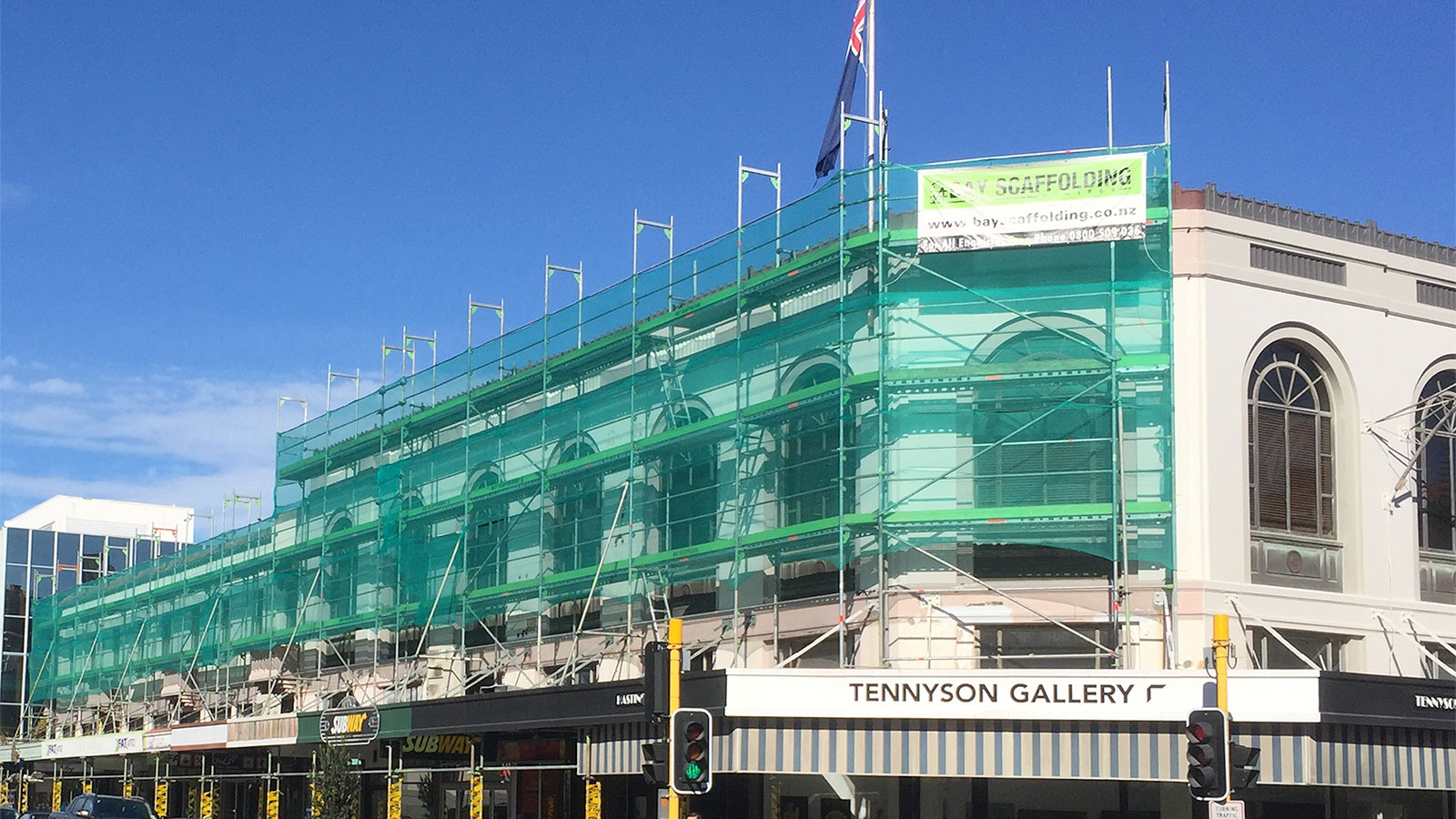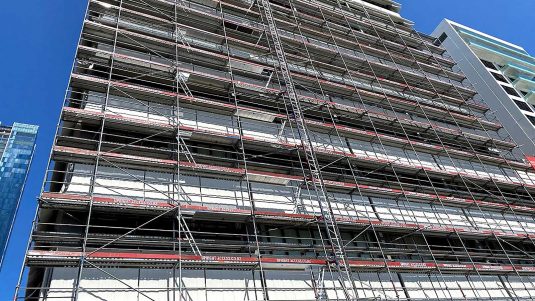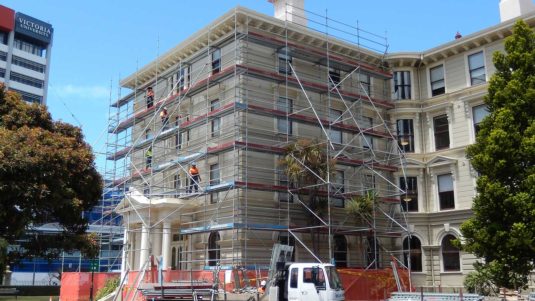
SpeedyScaf in Art Deco Capital
Bay Scaffolding were contracted to provide access to an Art Deco building in Napier.
SpeedyScaf for painters
The Criterion Art Deco Backpackers building on Emerson Street in Napier needed a new coat of paint. Rob Marffy and the team at Bay Scaffolding quickly set about erecting a Layher SpeedyScaf Scaffold for the painters. Rob said “it was important to complete this build as quickly as possible due to its proximity to the public, on one of Napier’s busiest streets.“
Art Deco painters
“We used Layher SpeedyScaf because it is the best scaffolding for straight, uncomplicated projects like this. The painters, who typically work on mobile scaffolds, really enjoyed the freedom to walk through to the next platform without any obstructions” said Rob.
Thank you to Rob Marffy of Bay Scaffolding for the use of this photo.
-
Contact
Rob Marffy
Company
Location
Website
-
Components
Comments
We used Layher SpeedyScaf because it is the best scaffolding for straight, uncomplicated projects like this.
Rob Marffy, Bay Scaffolding
MORE SCAFFOLDING PROJECTS

Quay Street SpeedyScaf
Upright Access Systems were contracted to provide access for a repainting job on Auckland’s Quay Street. For this large repainting job, Upright Access Systems used Layher’s efficient SpeedyScaf scaffolding system. Continue reading

Victoria University Law Faculty Building
Instant Access NZ were asked to provide scaffold for Carus Group Ltd to repaint the exterior of Victoria University Continue reading
Background information
Napier is located in Hawke’s Bay on the eastern coast of New Zealand’s North Island. The population of Napier is about 63,900. About 18 kilometres south of Napier is the inland city of Hastings. These two neighbouring cities are often called “The Bay Cities” or “The Twin Cities” of New Zealand. The total population of the Napier-Hastings Urban Area is 134,500 people, which makes it the sixth-largest urban area in New Zealand.
Napier is about 320 kilometres northeast of the capital city of Wellington. Napier has a smaller population than its neighbouring city of Hastings but is seen as the main centre due to it being closer in distance to both the seaport and the main airport that service Hawke’s Bay, and Hastings’ population figure includes 13,000 people living in Havelock North, which is often considered a town in its own right. The City of Napier has a land area of 106 square kilometres and a population density of 540 per square kilometre.
Source: Wikipedia


